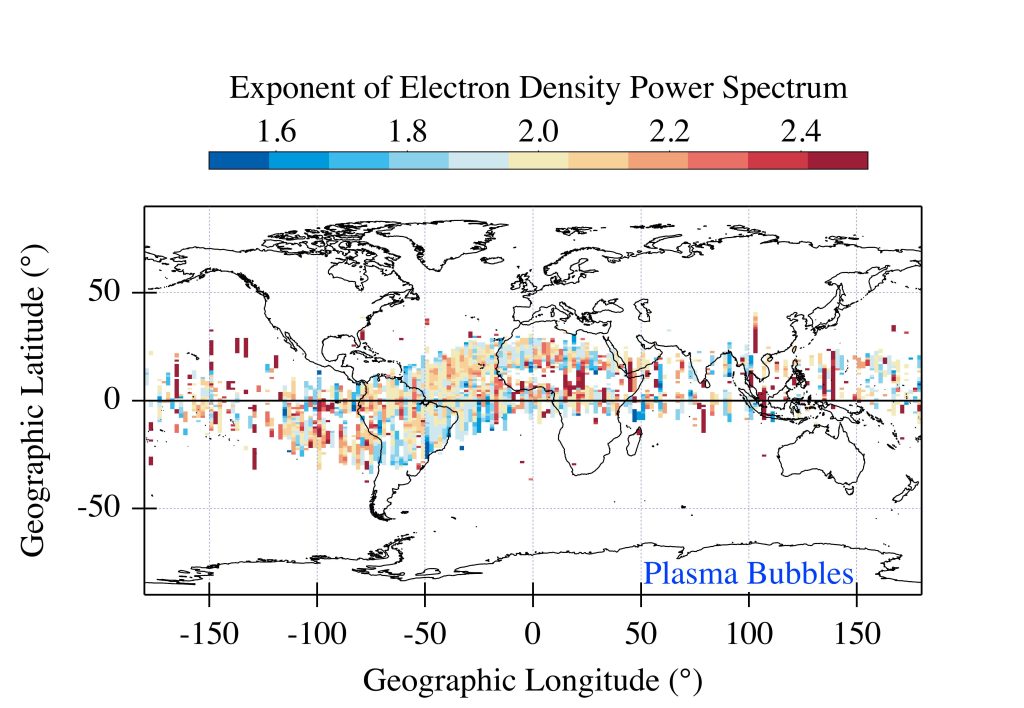Papers from SWICo members
P. De Michelis, G. Consolini, R. Tozzi, A. Pignalberi, M. Pezzopane, I. Coco, F. Giannattasio, and M.F. Marcucci
Equatorial plasma bubbles are ionospheric irregularities that usually occur after sunset and are characterized by strong density depletions. At the edges and inside the bubbles plasma turbulence processes are thought to take place, that are able to perturb electromagnetic signals crossing these regions, such as for example those from GNSS satellites. We investigated the relationship between the Rate Of change of electron Density Index (RODI) and the scaling features of the electron density during plasma bubbles crossings, as identified by 22 months of data of the Swarm A spacecraft (2014-2016).

We found that plasma bubbles exhibit scaling properties, which are completely different from the surrounding environment and are associated with large density gradients. These large density gradients, which are certainly the result of the turbulent nature of the irregularities, are reflected in high RODI values. Therefore, RODI could be used as a proxy of those ionospheric irregularities which are characterized by a turbulent nature.
Publication: P.De Michelis, G. Consolini, R. Tozzi, A. Pignalberi, M. Pezzopane, I. Coco, F. Giannattasio, M. F. Marcucci, Ionospheric Turbulence and the Equatorial Plasma Density Irregularities: Scaling Features and RODI, Remote Sens., 13, 759, 2021. https://doi.org/10.3390/rs13040759
